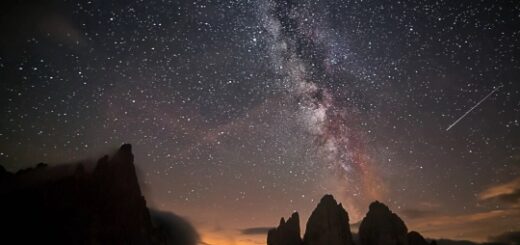Exoplanet WASP-12b Is Darker Than Asphalt
There are many dark worlds in the Universe, but WASP-12b reflects almost no light, making it appear essentially pitch black. Located about 1400 light-years, this intriguing exoplanet is darker than asphalt.
With a radius almost twice that of Jupiter and a year of just over one Earth day, WASP-12b is categorized as a hot Jupiter. Because it is so close to its parent star, the gravitational pull of the star has stretched WASP-12b into an egg shape and raised the surface temperature of its daylight side to 2600 degrees Celsius.

Using the Space Telescope Imaging Spectrograph (STIS) on the NASA/ESA Hubble Space Telescope, an international team led by astronomers at McGill University, Canada, and the University of Exeter, UK, have measured how much light the exoplanet WASP-12b reflects — its albedo — in order to learn more about the composition of its atmosphere.
The results were surprising, explains lead author Taylor Bell, a Master’s student in astronomy at McGill University who is affiliated with the Institute for Research on Exoplanets: “The measured albedo of WASP-12b is 0.064 at most. This is an extremely low value, making the planet darker than fresh asphalt!”
This makes WASP-12b two times less reflective than our Moon which has an albedo of 0.12. Bell adds: “The low albedo shows we still have a lot to learn about WASP-12b and other similar exoplanets.”
The high temperature is also the most likely explanation for WASP-12b’s low albedo. “There are other hot Jupiters that have been found to be remarkably black, but they are much cooler than WASP-12b. For those planets, it is suggested that things like clouds and alkali metals are the reason for the absorption of light, but those don’t work for WASP-12b because it is so incredibly hot,” explains Bell.
The daylight side of WASP-12b is so hot that clouds cannot form and alkali metals are ionized. It is even hot enough to break up hydrogen molecules into atomic hydrogen which causes the atmosphere to act more like the atmosphere of a low-mass star than like a planetary atmosphere. This leads to the low albedo of the exoplanet.
“After we measured the albedo we compared it to spectral models of previously suggested atmospheric models of WASP-12b”, explains Nikolay Nikolov (University of Exeter, UK), co-author of the study. “We found that the data match neither of the two currently proposed models.”.The new data indicate that the WASP-12b atmosphere is composed of atomic hydrogen and helium.
“The fact that the first two exoplanets with measured spectral albedo exhibit significant differences demonstrates the importance of these types of spectral observations and highlights the great diversity among hot Jupiters,” concludes Bell.



 Creators of mankind
Creators of mankind Description of “Tall white aliens”
Description of “Tall white aliens” Where they came from?
Where they came from? About hostile civilizations
About hostile civilizations The war for the Earth
The war for the Earth “Tall white aliens” about eternal life
“Tall white aliens” about eternal life Video: “Nordic aliens”
Video: “Nordic aliens” Aliens
Aliens Alien encounters
Alien encounters The aliens base
The aliens base UFO
UFO Technology UFO
Technology UFO Underground civilization
Underground civilization Ancient alien artifacts
Ancient alien artifacts Military and UFO
Military and UFO Mysteries and hypotheses
Mysteries and hypotheses Scientific facts
Scientific facts


















